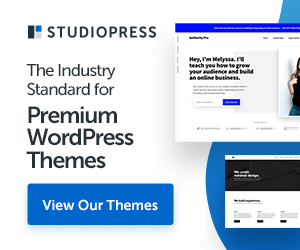Almost every new business owner, no matter how inexperienced in the ways of the internet they might be, knows about the basic pages that their company’s website should have. But that doesn’t mean that they understand how they should create and structure the copy and design for these pages to produce the desired results. Keep in mind that your website is one of your company’s most powerful selling tools, and when designed properly, it can ensure long-term growth for your brand.

Today, we’ll be going over the most important pages on your website and what they should contain, in order to fine-tune your online presentation and set your website up for success. Let’s dive in.
The homepage, of course
You can think of your website’s home page like the face of your brand, or your storefront. It will either appeal to the modern customer and invite them inside to peruse your site, or it will deter them and send them off into the warm embrace of your competitors. With that in mind, it’s imperative that the home page portrays your brand’s identity in the best possible light.
Typically, you will have as little as eight seconds to capture the visitor’s attention and persuade them that you have the solution to their problems when they land on your homepage. So, start by defining your value proposition and make it a focal point of the page. Don’t forget about visuals and make sure to weave your brand into the design to make it memorable and relatable. Use a unique tone of voice and a distinct vocabulary that will intrigue the visitor and inspire them to keep perusing your site.
Products and services
The second most important page on your site is the one that displays your products and/or services. In a nutshell, this page is the very purpose of your brand’s existence, so it needs to be perfect. Now, “perfection” is a relative term and in this case, it signifies the importance for the page to:
- Portray the right set of values in order to make it relatable.
- Showcase your brand’s identity to evoke the right emotions.
- Be professional yet conversational enough to establish a deeper connection with the visitor.
- Offer a concrete solution for the customer’s problems.
You can achieve all of this in a number of ways, but here’s another checklist to make it easier:
- Don’t clutter the page with all of your products.
- Space them out and let every product or service tell a story.
- Add a brief description of each to incentivise the visitor to click on the offer.
- Start the descriptions with a clear value proposition, after which you can transition into storytelling.
- Make the descriptions relatable for your customers. Inspire them to envision themselves using your products and how they can elevate their quality of life or help them achieve their goals.
Privacy policy and Terms & Conditions
It might sound like a chore, and you might find it dreadfully dull unless you’re a lawyer, but the fact remains that a well-crafted Privacy Policy and a Terms & Conditions page could save your brand in the long term. The privacy policy needs to contain all of the information about how you collect, store, and use customer data.
On the other hand, your Terms & Conditions page is the rulebook for using and interacting with your website and brand, and it should even contain all of the legal binding contract templates you might need when you’re working with external partners, clients, and remote employees. Having all of this information displayed on your site will ensure that your brand is protected from a legal standpoint, it will elevate your brand’s trustworthiness and reputation, and of course, safeguard the online privacy of your visitors.
A page about your brand
The About Us page is another must. This is the page where people will get the change to familiarise themselves with your amazing brand, and gather all of the necessary information about your company. Needless to say, you cannot afford to make a mistake here, or you might lose your potential customers for good.
Firstly, provide the basic information about your brand. Tell a story of how you came to be, and the move on to your values and the causes you stand for to establish a deeper connection with the reader. Make sure to weave your brand’s tone of voice into the copy, and whatever you do, avoid clichés. Because nobody really cares that you’re “committed to excellence”, but they might just care about your green initiative.
The blog and content page
There are many reasons why you might want to put a content page on your site. First, people love free stuff, and the content you put out will serve the purpose of educating your audience and resolving their problems. Secondly, good content feeds the SEO machine and helps position your brand in all of the relevant search results. And thirdly, you can disseminate your content across social media and other online channels to boost brand awareness and reputation, spike engagement, and drive traffic back to your site.
A contact page
And lastly, use your contact page to provide your visitors with numerous quick-and-easy ways they can get in touch with members of your brand. Include a contact form, but be sure to give them an email address as well, your social media handles, and provide a phone number if you have one. Include a Google map for your physical office or store, and be sure to encourage visitors to get in touch with a promise of a prompt reply.
Wrapping up
Every website needs to have a certain number of essential pages that will provide business information, capture the attention of the online audience, and inspire them to make the decision to interact with your brand. Use these insights to make better pages and set your brand up for long-term success in the online world.





















